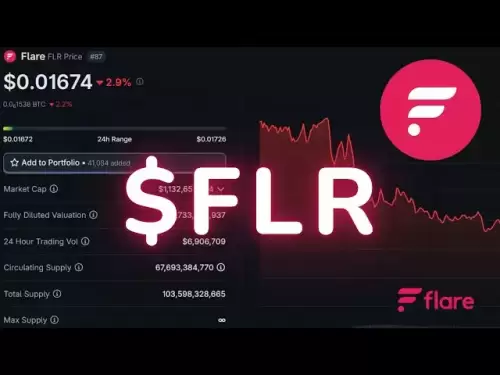-
 Bitcoin
Bitcoin $108,262.4325
-1.40% -
 Ethereum
Ethereum $2,518.2882
-2.94% -
 Tether USDt
Tether USDt $1.0003
-0.01% -
 XRP
XRP $2.2262
-1.71% -
 BNB
BNB $653.9254
-1.55% -
 Solana
Solana $148.1036
-3.11% -
 USDC
USDC $1.0000
0.01% -
 TRON
TRON $0.2829
-1.45% -
 Dogecoin
Dogecoin $0.1639
-4.82% -
 Cardano
Cardano $0.5742
-4.43% -
 Hyperliquid
Hyperliquid $38.9506
-3.95% -
 Sui
Sui $2.9040
-4.34% -
 Bitcoin Cash
Bitcoin Cash $484.8307
-2.62% -
 Chainlink
Chainlink $13.1971
-3.73% -
 UNUS SED LEO
UNUS SED LEO $9.0822
0.51% -
 Avalanche
Avalanche $17.8613
-4.01% -
 Stellar
Stellar $0.2385
-2.26% -
 Toncoin
Toncoin $2.7570
-3.88% -
 Shiba Inu
Shiba Inu $0.0...01145
-3.99% -
 Litecoin
Litecoin $86.9999
-2.43% -
 Hedera
Hedera $0.1538
-3.90% -
 Monero
Monero $313.7554
-2.03% -
 Polkadot
Polkadot $3.3681
-5.08% -
 Dai
Dai $1.0000
0.00% -
 Ethena USDe
Ethena USDe $1.0001
-0.01% -
 Bitget Token
Bitget Token $4.4401
-2.97% -
 Uniswap
Uniswap $6.9644
-8.41% -
 Pepe
Pepe $0.0...09666
-4.79% -
 Aave
Aave $266.5686
-5.04% -
 Pi
Pi $0.4713
-4.95%
Getting started with ETH investment in India: a step-by-step guide to buying Ethereum
In India, investing in Ethereum is attracting many investors. By selecting the right exchange, completing KYC, recharge funds, placing an order and storing it safely, you can purchase ETH smoothly.
Apr 11, 2025 at 03:40 pm

Step 1: Choose the right cryptocurrency exchange
Research and Filter : There are several cryptocurrency exchanges available in India, such as WazirX, CoinSwitch Kuber, etc. You need to conduct in-depth research on these exchanges to understand their transaction fees, supported payment methods, user reviews, security measures, etc. For example, WazirX is favored by many investors for its simple and easy-to-use interface and rich trading pairs; CoinSwitch Kuber has certain advantages in the exchange of fiat currencies and cryptocurrencies. You can obtain relevant information through online forums, cryptocurrency information websites and other channels.

Register an account : After selecting an exchange, go to its official website or download the official application to register. During the registration process, you usually need to provide your personal information, such as your name, email address, mobile phone number, etc., and set your login password and security issues. Be sure to ensure that the information provided is accurate and set a strong password with letters, numbers and special characters to enhance account security.
Complete Identity Verification (KYC) : In order to comply with India’s Anti-Money Laundering (AML) and Understand Your Customer (KYC) regulations, the exchange will require you to complete Identity Verification. This usually requires you to upload a government-issued ID card, such as a scan or photo of your passport, driver's license or voter's ID card, as well as a recent proof of address, such as utility bills, bank statements, etc. The verification process can take several hours to several days, depending on the speed of the exchange's review and the accuracy of the information you provide.
Step 2: Recharge funds to the exchange account
Fiat currency recharge : Some exchanges in India support the recharge of Indian Rupee (INR) to your exchange account through bank transfers, e-wallets (such as Paytm, Google Pay, etc.). If you choose bank transfer, you need to log in to your online banking and fill in the relevant transfer information according to the recharge guidelines provided by the exchange, including collection account information, transfer amount, etc. Recharge of e-wallets is relatively easy. Just select the corresponding e-wallet option on the recharge page of the exchange, and follow the prompts to authorize the e-wallet to transfer money to the exchange account.
Cryptocurrency top-up : If you already own other cryptocurrencies, such as Bitcoin (BTC), you can also top it up to an exchange account and then exchange it for Ethereum. On the exchange's top-up page, find the cryptocurrency top-up option, select the type of cryptocurrency you want to top up (such as BTC), and the exchange will generate an exclusive top-up address for you. You just need to send the Bitcoin in your wallet to this address. Please note that cryptocurrency transfers require a certain network handling fee, and the transfer confirmation time may vary depending on network congestion, usually ranging from several minutes to dozens of minutes.
Step 3: Purchase Ethereum

Enter the trading interface : After completing the account recharge, log in to your exchange account and find the trading interface. In the trading interface, you can see various trading pairs, find "ETH/INR" (if you buy Ethereum in Indian Rupee) or the trading pairs between the cryptocurrency you top up with Ethereum (such as "ETH/BTC").
Place an order to purchase : In the trading interface, select "Market Order" or "Limit Order" to purchase. The market order is to buy Ethereum immediately at the current market price, and you can complete the transaction quickly, but you may not be able to accurately control the purchase price. Limit orders allow you to set a purchase price you expect, and the order will be executed only when the market price reaches or is better than the price you set. For example, if you think Ethereum is currently priced too high and you want to buy it when the price drops to a certain level, you can set a limit order. Enter the quantity of Ethereum you want to purchase or the amount you are willing to spend. After confirming that the order information is correct, click the "Order" button.
Confirm transaction : After placing an order, the exchange will ask you to confirm the transaction information again, including the quantity, price, handling fee, etc. of Ethereum purchased. After carefully checking this information to ensure accuracy, click the "Confirm Transaction" button. Once the transaction is confirmed, your exchange account will deduct the corresponding funds, and you will receive the purchased Ethereum, which will be displayed in the Ethereum wallet balance in your exchange account.
Step 4: Storage Ethereum
Exchange Wallet : After the transaction is completed, the Ethereum you purchased will initially be stored in the wallet provided by the exchange. The exchange wallet is easy to use, and you can directly conduct trading operations on the exchange platform. However, since exchanges are potential targets for cyber attacks, there are certain risks in storing large amounts of Ethereum in exchange wallets for a long time. Therefore, if you plan to hold Ethereum for a long time, it is recommended to transfer it to a more secure storage method.
Personal wallet : Personal wallets are divided into hardware wallets and software wallets. Hardware wallets such as Ledger Nano S, Trezor, etc. are physical devices specially used to store cryptocurrencies. By storing private keys in offline devices, security is greatly improved. When using a hardware wallet, you need to follow the device's instructions to set it up, create a wallet and back up the mnemonic words (this is an important information for restoring the wallet, and it must be kept properly). Software wallets include desktop wallets (such as Exodus), mobile wallets (such as Trust Wallet), etc., which can be installed on your computer or mobile phone. The software wallet is easy to use, but you need to pay attention to protecting the security of the device, setting strong passwords and avoiding use in an unsafe network environment. When transferring Ethereum from the exchange wallet to the personal wallet, you need to obtain the receiving address in the personal wallet, and then enter the receiving address and the withdrawal quantity in the exchange's withdrawal interface to complete the withdrawal operation as prompted. The withdrawal process may require a certain network handling fee and wait for the blockchain network to confirm the transaction. The confirmation time is generally around a few minutes to more than ten minutes.
Disclaimer:info@kdj.com
The information provided is not trading advice. kdj.com does not assume any responsibility for any investments made based on the information provided in this article. Cryptocurrencies are highly volatile and it is highly recommended that you invest with caution after thorough research!
If you believe that the content used on this website infringes your copyright, please contact us immediately (info@kdj.com) and we will delete it promptly.
- Bitcoin's Pattern Break: Are HODLers the Key to the Next Surge?
- 2025-07-04 18:50:12
- Bitcoin Price, Trump's Bill, and the $150K Dream: A NYC Take
- 2025-07-04 19:50:12
- Ethereum, LILPEPE, and the July Bounce: Will Pepe Steal ETH's Thunder?
- 2025-07-04 19:10:12
- Binance Institutional Loans: Unlocking 4x Leverage and Zero Interest for Whales
- 2025-07-04 19:15:12
- Bitcoin Bull Run: Analysts Eye Peak in Late 2025?
- 2025-07-04 19:20:13
- Pepe Indicators, Bullish Forecast: Can the Meme Coin Rally?
- 2025-07-04 19:25:12
Related knowledge
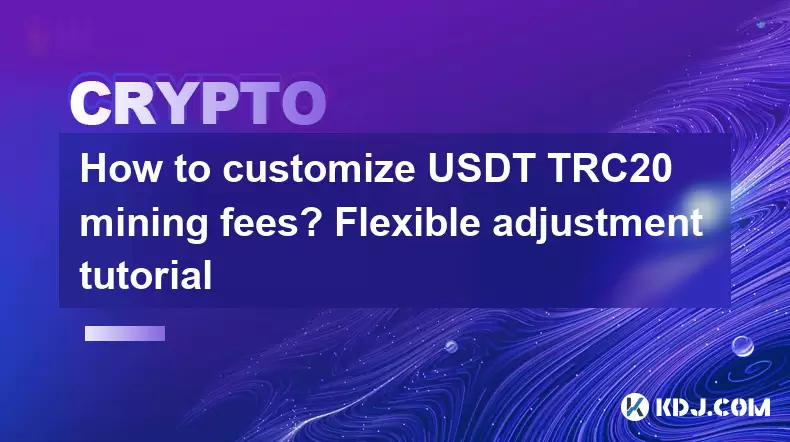
How to customize USDT TRC20 mining fees? Flexible adjustment tutorial
Jun 13,2025 at 01:42am
Understanding USDT TRC20 Mining FeesMining fees on the TRON (TRC20) network are essential for processing transactions. Unlike Bitcoin or Ethereum, where miners directly validate transactions, TRON uses a delegated proof-of-stake (DPoS) mechanism. However, users still need to pay bandwidth and energy fees, which are collectively referred to as 'mining fe...
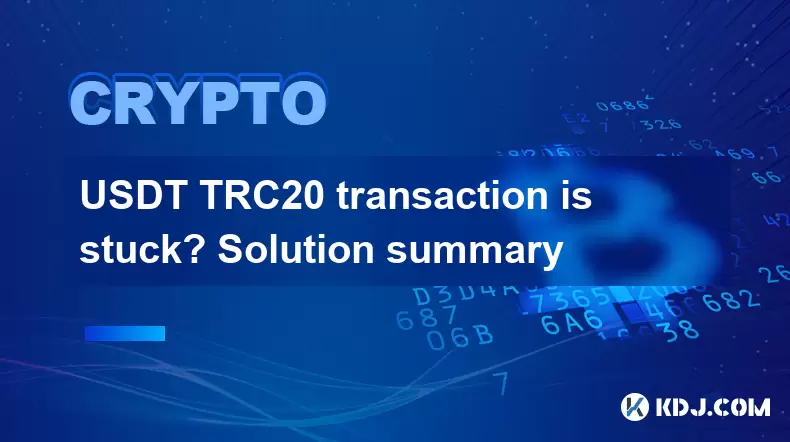
USDT TRC20 transaction is stuck? Solution summary
Jun 14,2025 at 11:15pm
Understanding USDT TRC20 TransactionsWhen users mention that a USDT TRC20 transaction is stuck, they typically refer to a situation where the transfer of Tether (USDT) on the TRON blockchain has not been confirmed for an extended period. This issue may arise due to various reasons such as network congestion, insufficient transaction fees, or wallet-rela...
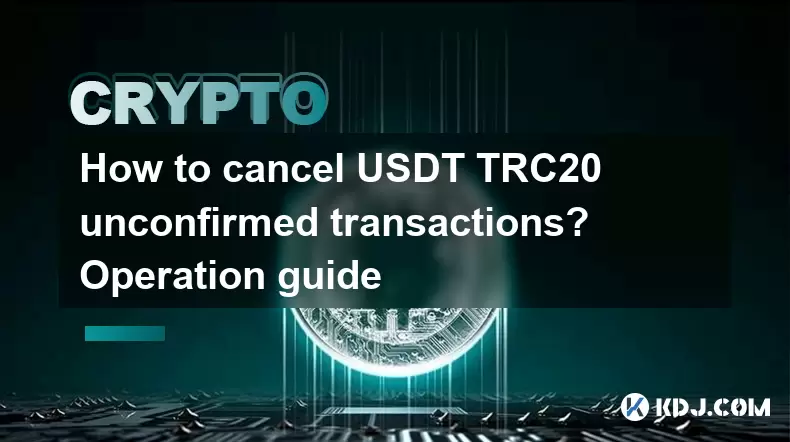
How to cancel USDT TRC20 unconfirmed transactions? Operation guide
Jun 13,2025 at 11:01pm
Understanding USDT TRC20 Unconfirmed TransactionsWhen dealing with USDT TRC20 transactions, it’s crucial to understand what an unconfirmed transaction means. An unconfirmed transaction is one that has been broadcasted to the blockchain network but hasn’t yet been included in a block. This typically occurs due to low transaction fees or network congestio...
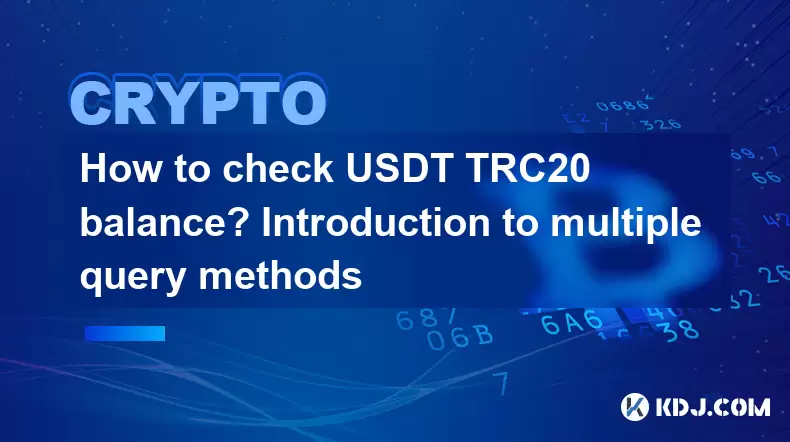
How to check USDT TRC20 balance? Introduction to multiple query methods
Jun 21,2025 at 02:42am
Understanding USDT TRC20 and Its ImportanceUSDT (Tether) is one of the most widely used stablecoins in the cryptocurrency market. It exists on multiple blockchain networks, including TRC20, which operates on the Tron (TRX) network. Checking your USDT TRC20 balance accurately is crucial for users who hold or transact with this asset. Whether you're sendi...
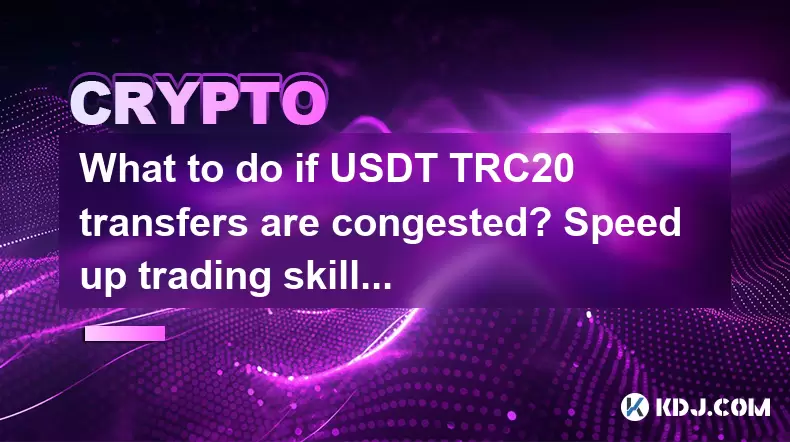
What to do if USDT TRC20 transfers are congested? Speed up trading skills
Jun 13,2025 at 09:56am
Understanding USDT TRC20 Transfer CongestionWhen transferring USDT TRC20, users may occasionally experience delays or congestion. This typically occurs due to network overload on the TRON blockchain, which hosts the TRC20 version of Tether. Unlike the ERC20 variant (which runs on Ethereum), TRC20 transactions are generally faster and cheaper, but during...
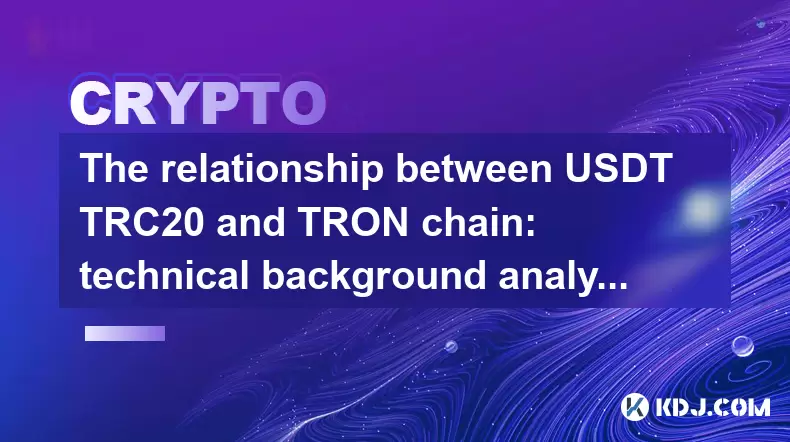
The relationship between USDT TRC20 and TRON chain: technical background analysis
Jun 12,2025 at 01:28pm
What is USDT TRC20?USDT TRC20 refers to the Tether (USDT) token issued on the TRON blockchain using the TRC-20 standard. Unlike the more commonly known ERC-20 version of USDT (which runs on Ethereum), the TRC-20 variant leverages the TRON network's infrastructure for faster and cheaper transactions. The emergence of this version came as part of Tether’s...

How to customize USDT TRC20 mining fees? Flexible adjustment tutorial
Jun 13,2025 at 01:42am
Understanding USDT TRC20 Mining FeesMining fees on the TRON (TRC20) network are essential for processing transactions. Unlike Bitcoin or Ethereum, where miners directly validate transactions, TRON uses a delegated proof-of-stake (DPoS) mechanism. However, users still need to pay bandwidth and energy fees, which are collectively referred to as 'mining fe...

USDT TRC20 transaction is stuck? Solution summary
Jun 14,2025 at 11:15pm
Understanding USDT TRC20 TransactionsWhen users mention that a USDT TRC20 transaction is stuck, they typically refer to a situation where the transfer of Tether (USDT) on the TRON blockchain has not been confirmed for an extended period. This issue may arise due to various reasons such as network congestion, insufficient transaction fees, or wallet-rela...

How to cancel USDT TRC20 unconfirmed transactions? Operation guide
Jun 13,2025 at 11:01pm
Understanding USDT TRC20 Unconfirmed TransactionsWhen dealing with USDT TRC20 transactions, it’s crucial to understand what an unconfirmed transaction means. An unconfirmed transaction is one that has been broadcasted to the blockchain network but hasn’t yet been included in a block. This typically occurs due to low transaction fees or network congestio...

How to check USDT TRC20 balance? Introduction to multiple query methods
Jun 21,2025 at 02:42am
Understanding USDT TRC20 and Its ImportanceUSDT (Tether) is one of the most widely used stablecoins in the cryptocurrency market. It exists on multiple blockchain networks, including TRC20, which operates on the Tron (TRX) network. Checking your USDT TRC20 balance accurately is crucial for users who hold or transact with this asset. Whether you're sendi...

What to do if USDT TRC20 transfers are congested? Speed up trading skills
Jun 13,2025 at 09:56am
Understanding USDT TRC20 Transfer CongestionWhen transferring USDT TRC20, users may occasionally experience delays or congestion. This typically occurs due to network overload on the TRON blockchain, which hosts the TRC20 version of Tether. Unlike the ERC20 variant (which runs on Ethereum), TRC20 transactions are generally faster and cheaper, but during...

The relationship between USDT TRC20 and TRON chain: technical background analysis
Jun 12,2025 at 01:28pm
What is USDT TRC20?USDT TRC20 refers to the Tether (USDT) token issued on the TRON blockchain using the TRC-20 standard. Unlike the more commonly known ERC-20 version of USDT (which runs on Ethereum), the TRC-20 variant leverages the TRON network's infrastructure for faster and cheaper transactions. The emergence of this version came as part of Tether’s...
See all articles























